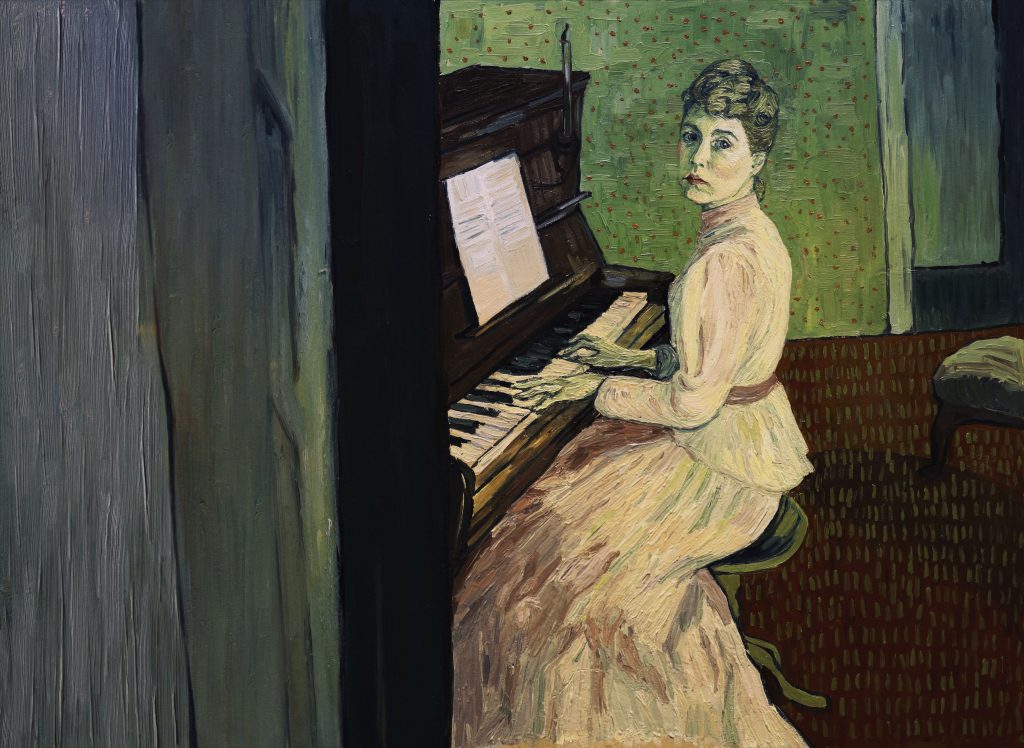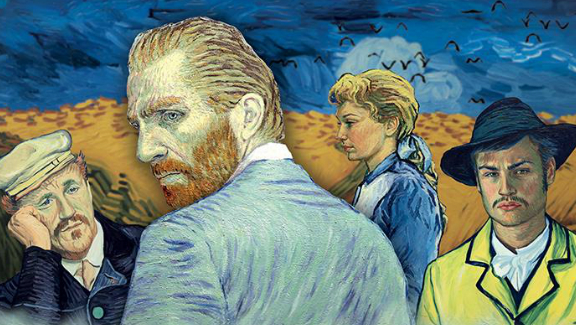Few artists have captured the public’s fancy like Vincent Van Gogh. His richly textured landscapes, interiors, and portraits, built up with a painterly impasto as inviting as a rich ganache, seem to grow in popularity with every passing year. And while the calendar and coffee mug industries wouldn’t be the same without him, even his most accessible work has always felt like it contained hidden meaning in the ridges and valleys of his vital brushwork.
His life, too, was filled with the sort of incidents and details that fuel a legend. There was the ear, of course, but also the hints of madness, drinking, and commercial failure that so many look for, perversely, in their artists. When he died in 1890 after shooting himself in the chest, his fame was still yet to come.
This week at the Berkshire Museum’s Little Cinema, Dorota Kobiela and Hugh Welchman’s film Loving Vincent explores both the art and the man behind it with a visually stunning twist. A feature-length painted animation done in Van Gogh’s own iconic style, the film is an immersive look at the life, death, and work of a singular artist. To tell their tale, Kobiela and Welchman employed over a hundred artists, who created over 65,000 oil paintings based on film frames from live action footage — actors would perform on sets designed to look like particular Van Gogh paintings, and artists would then paint over the individual frames, mimicking Van Gogh’s brushwork, before the final, painted, frame was rephotographed. It’s a breathtaking amount of work, and it’s clear that everyone involved has a deep appreciation of the artist.
The plot is not quite as daring or innovative: set a year after Van Gogh’s death, it turns his suicide into something of a murder mystery. When a postman discovers an undelivered letter, written by Vincent and meant for his brother Theo, he sends his son to deliver it. When he arrives, he discovers that Theo, too, is dead, and as he starts to make inquiries he begins to think that the suicide might actually have been something more complicated.
Loving Vincent marks the film debut of theater actor Robert Gulaczyk — he is Van Gogh here — and also features Saoirse Ronan (Lady Bird) as Marguerite Gachet, the daughter of Van Gogh’s doctor and one of the artist’s models. It’s likely though that viewers will be too entranced by the technique of the film to take too much note of the performances that underpin it — and that’s okay. Here, like with so much art, it is the shock of the unexpected visual that first draws us in.
Loving Vincent, Jan. 19-22, 7 p.m., Berkshire Museum’s Little Cinema, 39 South St., Pittsfield.
Also this week: another artist gets an unusual film treatment in Chagall-Malevich, coming this Sunday to the Yiddish Book Center in Amherst. Inspired by the memoirs of Russian Jewish artist Marc Chagall, writer/director Alexander Mitta’s film mixes truth and folklore to tell the story of Chagall’s return to Vitebsk, his childhood home. There, he falls in love (again) with Bella Rosenfeld and trades barbs with his artistic and academic sparring partner Kazimir Malevich, who wants to pit his abstract style of Suprematism against Chagall’s warmer, humanist, art. In some of the films most engaging scenes, the onscreen action morphs, Loving Vincent style, into a Chagall-esque wonderment, reminding viewers that if we keep our minds open to the possibility, art is all around us.
Chagall-Malevich, Jan. 21, 2 p.m., Yiddish Book Center, 1021 West St., Amherst.
Jack Brown can be reached at cinemadope@gmail.com




